#kuitou
Note
Hi my friend wanted to ask about Chinese Opera and the red pom poms on their hats and their significance. I asked my mom and she said they were for decoration so I just wanted clarification
Hi! Thanks for the question, and sorry for taking ages to reply!
The pom poms you see on 盔头/kuitou (Chinese opera headdresses) are called 绒球/rongqiu (lit. "velvet ball"). They are often red, but can also be other colors, and vary in size. Ronqiu are decorative and serve to distinguish the many different types of kuitou from one another. Each type of kuitou is distinct in the number, size, and color of rongqiu that it's decorated with (of course, not all kuitou have rongqiu).
Below - a few different types of Beijing opera kuitou decorated with rongqiu (x):

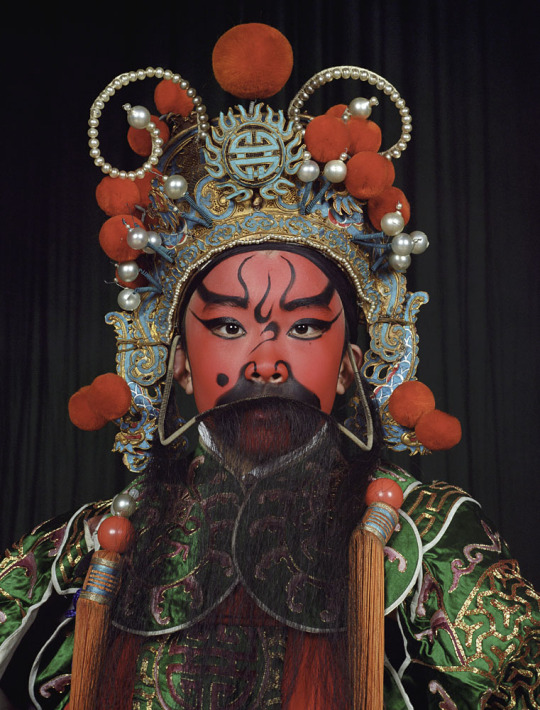
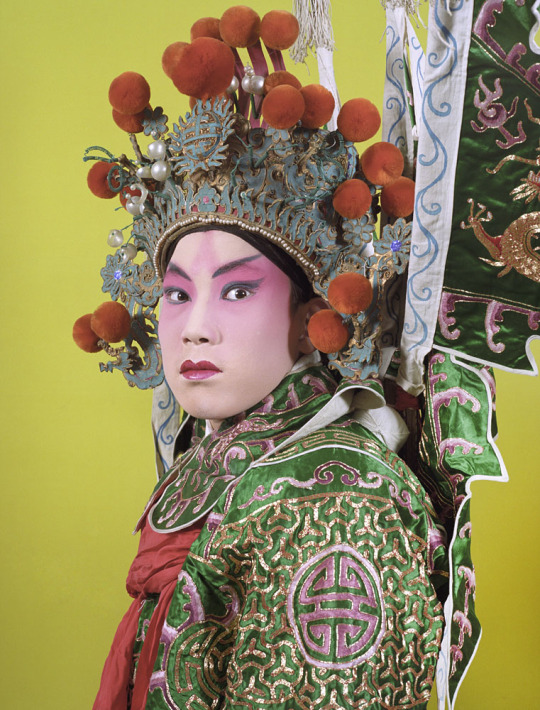
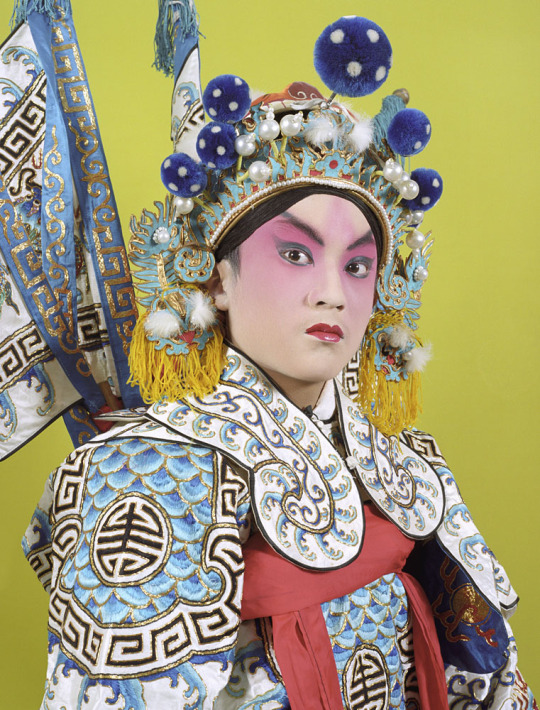

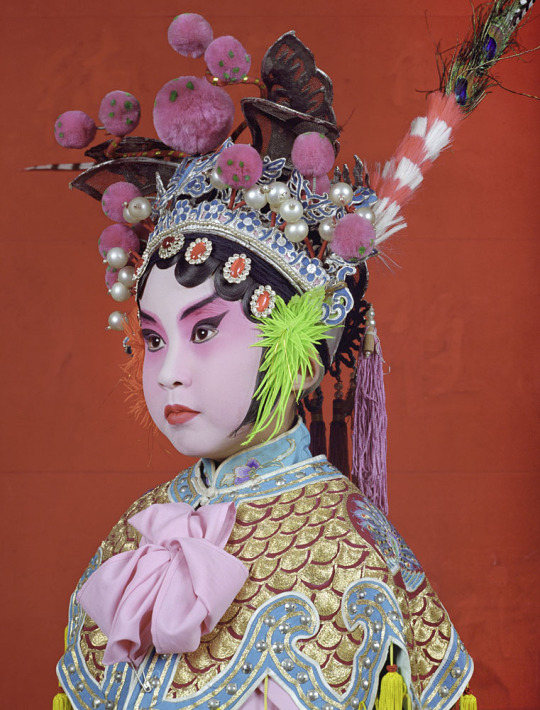
Rongqiu isn't used just for Chinese opera performances - it's a very common decorative item for Chinese headwear, especially for traditional/folk performances.
Below - examples of rongqiu use in folk custom/performance costumes, left to right: 1) 游神/youshen (wandering gods) procession in Fujian (x), 2) 英歌舞/yingge wu (yingge dance) performer in Guangdong (x), 3) & 4) 高跷/gaoqiao (stilt walking) performers in a 社火/shehuo parade in Gansu (x):

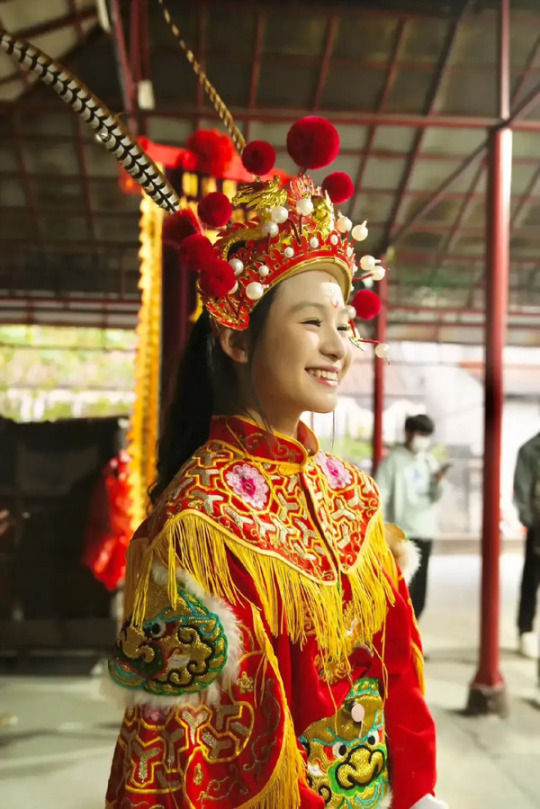

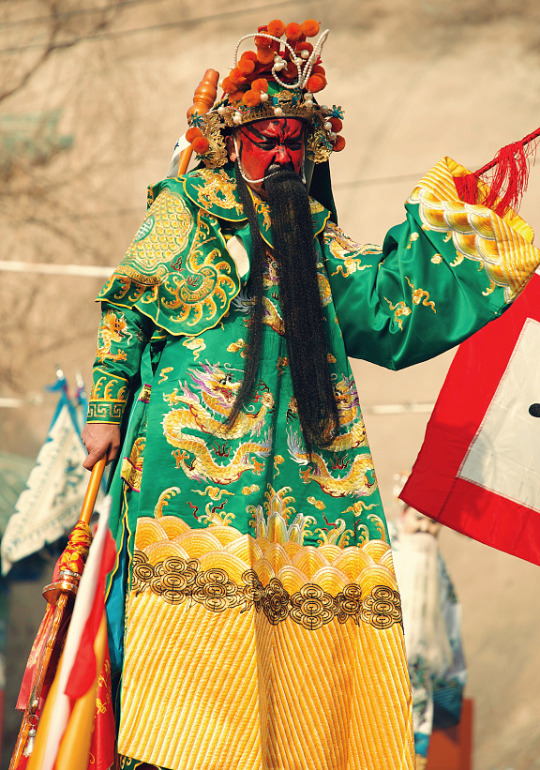
As a festive decoration, rongqiu was also widely used on bridal guan (crowns) from the Qing dynasty into the modern day.
Below - examples of rongqiu use in historical bridal guan: Left - a bride during the late Qing dynasty, circa 1890 (x); Right - a bride during the Republican era/minguo, in 1939 (x):
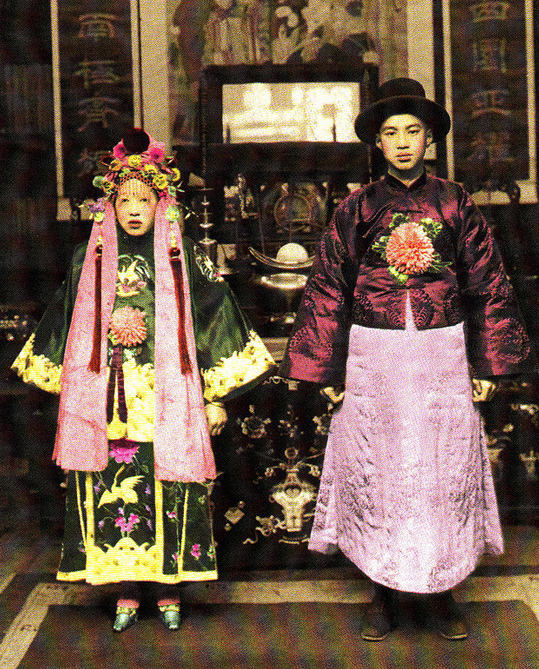
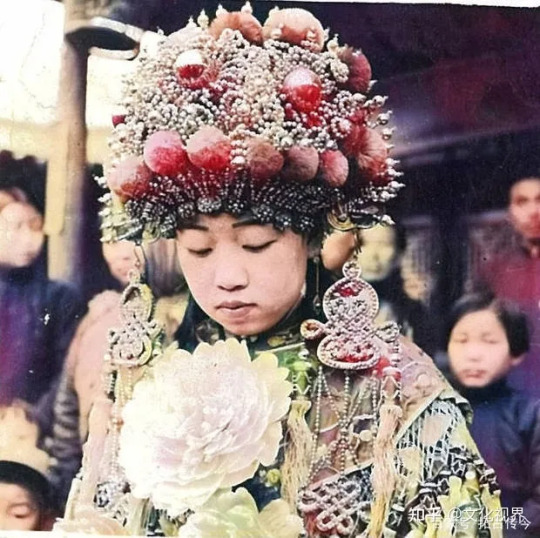
For some reason it's been extremely difficult to find sources on the origin of rongqiu that would shed more light on its significance, but based on historical paintings the use of rongqiu as a head ornament may have originated in the Qing dynasty. During the late Qing dynasty, it was fashionable among women to wear rongqiu on the sides of their hair, as can be seen in the paintings below (x):

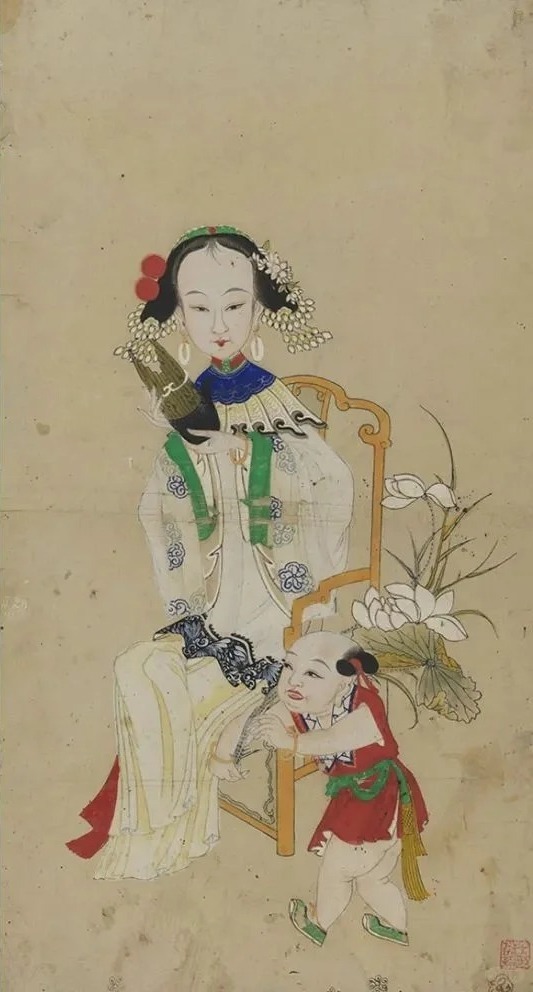
This particular style of rongqiu hair ornament was depicted in the 2012 historical cdrama 娘心计/Mother's Scheme:
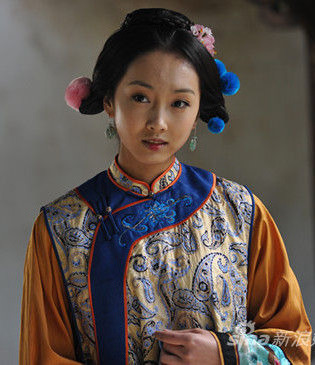
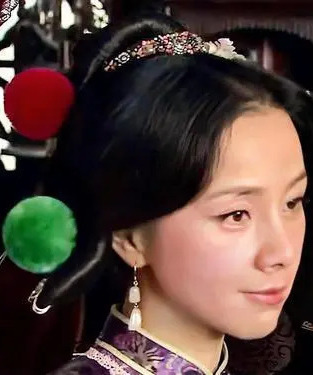
For more references, please see my rongqiu and kuitou tags.
If anyone has more information on the significance of rongqiu, please do share!
Hope this helps ^^
#rongqiu#pompoms#kuitou#chinese opera#opera costume#xifu#hanfu#history#reference#ask#reply#junpeicindystories#chinese fashion#chinese clothing#china
506 notes
·
View notes
Photo

Westminster Halo Tiara, Lacloche, 1930, part of the “Power & Image: Royal & Aristocratic Tiaras” Exhibition at Sotheby’s. The tiara is designed as a halo to be worn over the crown of the wearer's head and extending outwards in the manner of a traditional Chinese headdress,
The tiara takes inspiration from the traditional Chinese Fengguan and Kuitou headdresses but infuses it with modern, angular motifs and sleek baguette- and marquise-cut diamonds. It was most notably worn by the 3rd Duke’s wife Loelia Ponsonby, whom Cecil Beaton photographed wearing the tiara. The Duke’s second wife, Anne Sullivan, later wore the tiara to the coronation of Elizabeth II in 1952.
The tiara was originally created to showcase three exceptional diamonds: the Hastings diamond, and the two pear-shaped Arcot diamonds. The original tiara design featured the three impressive diamonds alongside some 1,400 smaller diamonds.
In June 1959, the tiara was bought by Harry Winston at Sotheby’s for £110,000 – a price that broke the world record at the time for a piece of jewellery sold at auction. He removed the Arcot and Hastings diamonds, recut them and sold them each as solitaire rings. (The tiara is now struck on the reverse with Harry Winston’s maker’s mark beside the setting). At one point, cabochon turquoise stones were set in the diamonds’ place – the tiara in this version was worn by Rose Movius Palmer, an American artist. The tiara can even be taken off its frame and worn as a necklace, as was demonstrated by Rockstar Alice Cooper in 1973 in an iconic photograph with Salvador Dalí. In October 1988, Sotheby’s once again sold the tiara, and the Arcot and Hastings diamonds continued to be sold and re-set into various forms such as a pendant created by jeweller Van Cleef & Arpels.
In its present form, the tiara has been redesigned to feature clusters of circular-, baguette-, marquise-cut, cushion- and pear-shaped diamonds in place of the original historic diamonds.
Source: Sotheby’s
See below for examples of it being worn
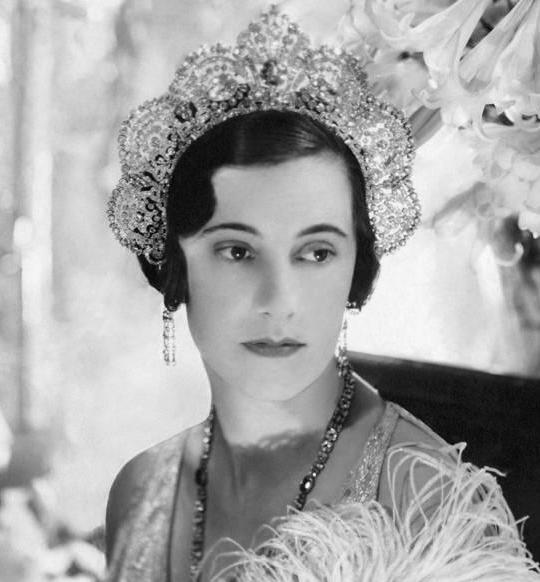

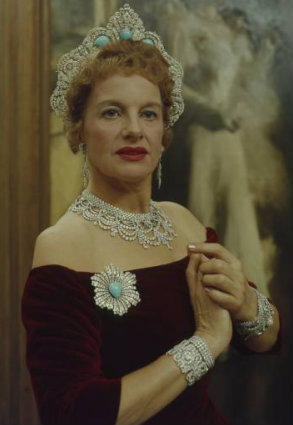

108 notes
·
View notes
Text
Cultural Fashion: Toph’s Original Hairband

So one detail of Toph’s design that I’ve always found intriguing were the little pom-poms decorating her hairband. They always seemed so uncharacteristically cutesy for Toph. I felt they must have had some sort of real life inspiration and I think I’ve found the source!
Pictured on the left is a Chinese Opera performer. As you can see, Chinese Opera headdresses, known as kuitou (盔头), tend to be decorated with pom-poms, known as róng qiú (绒球). And, like Toph’s hairband, kuitou tend to be positioned high enough on the head to leave room for bangs or fringes. In other words, I believe Toph’s hairband is a homemade and simplified kuitou.
It may sound a bit far-fetched, but hear me out: Toph grew up very rich and there’s nothing more classically bourgeois than spending a night at the opera. It’s also very music-heavy, so her parents would probably see it as an appropriate interest for their blind daughter. They invite performance troupes to their estate to put on shows for Toph, but it’s not the singing or dialogue that enchants their daughter, it’s the fight scenes.
Skip ahead a few years and Toph has just discovered the Earth Rumble bending tournament. She’s told she’ll need to bring her own costume. Her only reference point for costumes are the opera costumes that her parents allowed her to touch. She decides she’ll need her own kuitou, even if it’s just a simple one with only two róng qiú hastily glued on. Chinese opera róng qiú are traditionally made with mulberry silk, the most expensive silk you can purchase, so Toph’s pom-poms are also a subtle allusion to her rich-kid roots.
1K notes
·
View notes